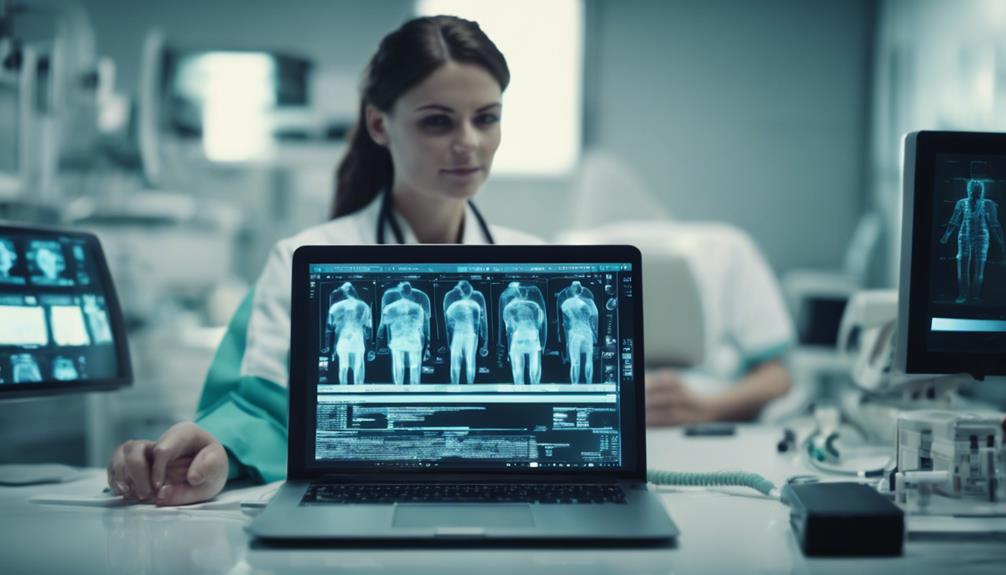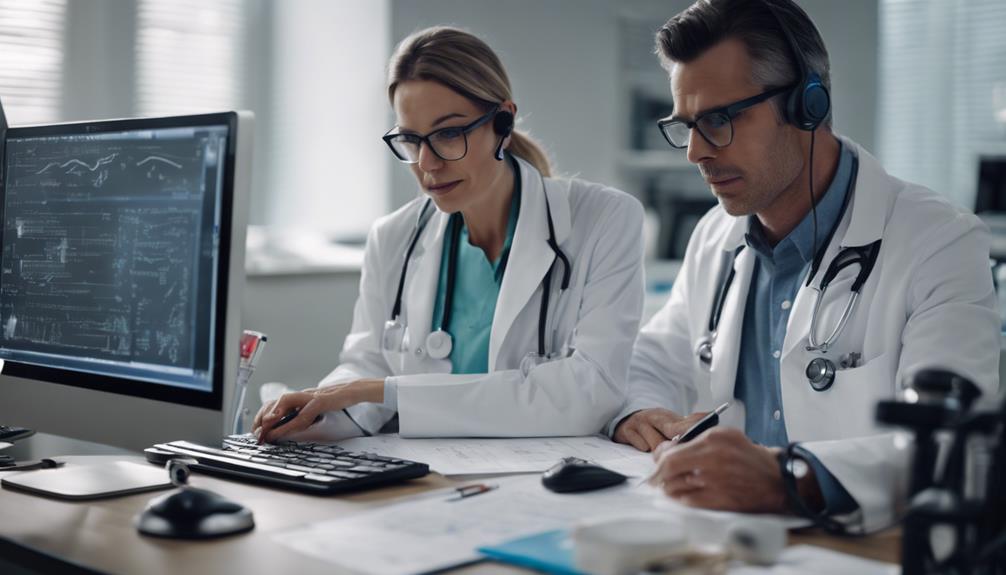Did you know that a virtual assistant for medical transcription can accurately transcribe complex medical terminology with precision and efficiency? By harnessing advanced speech recognition technology, these virtual assistants play a crucial role in converting audio dictations into written medical records. But how exactly do these virtual assistants navigate the intricate world of healthcare jargon and ensure the utmost accuracy in transcription? Let’s explore the inner workings of this innovative technology and its impact on the medical documentation process.
Transcription Process Overview
In medical transcription, you listen to recorded dictations and accurately convert them into written text using specialized software. The transcription workflow involves receiving audio files from healthcare providers, transcribing the content into written form, and then editing and formatting the text for accuracy and clarity. As part of the training process, transcriptionists learn medical terminology, grammar rules, and how to use transcription software efficiently.
Technology advancements have significantly improved the transcription process, with speech recognition software aiding in converting spoken words into text. Quality control is a crucial aspect of medical transcription to ensure the accuracy and completeness of the transcribed documents. Transcriptionists are trained to review their work carefully, check for errors, and make necessary corrections before finalizing the transcripts.
Utilization of Voice Recognition Software
Voice recognition software revolutionizes the medical transcription process by automatically transcribing spoken words into written text, enhancing efficiency and accuracy in the transcription workflow. When utilizing voice recognition software for medical transcription, consider the following:
- Training Requirements: Users may need initial training to optimize the software’s accuracy and efficiency. Understanding how to dictate clearly and utilize any specific commands can improve transcription quality.
- Cost Effectiveness: Voice recognition software can be a cost-effective solution compared to traditional transcription services. While there may be initial costs for software and training, the long-term savings can be significant.
- Integration with EMR Systems: Voice recognition software can seamlessly integrate with Electronic Medical Record (EMR) systems, streamlining the documentation process and reducing the chances of errors.
- Continuous Improvement: Regularly updating and refining the software can enhance its performance over time, improving transcription accuracy and efficiency.
Importance of Medical Terminology Knowledge
Understanding medical terminology is a fundamental requirement when utilizing voice recognition software for medical transcription. Terminology mastery is crucial for accurately transcribing medical dictations. Having a strong grasp of medical terms enables the virtual assistant to interpret and transcribe the spoken words with precision. Language proficiency is essential to ensure the correct spelling, grammar, and context of medical terms within the transcribed documents. A comprehensive knowledge of medical terminology allows the virtual assistant to accurately transcribe complex medical jargon, abbreviations, and specialized vocabulary used in healthcare settings.
Moreover, language proficiency plays a vital role in maintaining the accuracy and quality of transcribed medical documents. Incorrect interpretation of medical terms due to a lack of terminology knowledge can lead to serious consequences, such as inaccurate patient records or treatment plans. Therefore, possessing expertise in medical terminology and language proficiency is paramount for virtual assistants engaged in medical transcription tasks.
Ensuring Patient Confidentiality
Mastering patient confidentiality protocols is essential for virtual assistants engaged in medical transcription to safeguard sensitive medical information effectively. Ensuring patient privacy and data security is paramount in this role. Here are four crucial steps to uphold patient confidentiality:
- Access Control: Limit access to patient records to authorized personnel only. Use secure login credentials and encryption methods to prevent unauthorized entry.
- Confidentiality Agreements: Require all staff, including virtual assistants, to sign confidentiality agreements outlining the importance of maintaining patient privacy and data security.
- Secure Transcription Tools: Utilize transcription software with built-in security features to protect patient information during the transcription process.
- Regular Training: Provide ongoing training on patient confidentiality protocols and data security measures to keep virtual assistants informed and updated on best practices.
Emphasizing Accuracy in Transcription
To excel in medical transcription, prioritize accuracy by meticulously transcribing patient records with precision and attention to detail. Quality control is essential in ensuring that transcribed medical documents are error-free. By emphasizing accuracy, you contribute to the overall quality of patient care by providing healthcare professionals with reliable and precise information.
Training programs play a crucial role in honing your transcription skills and emphasizing the importance of accuracy. These programs help you familiarize yourself with medical terminology, enhance your typing speed, and instill best practices for maintaining accuracy in transcription. Through continuous learning and practice, you can refine your transcription abilities and consistently deliver high-quality work.
Frequently Asked Questions
Can a Virtual Assistant for Medical Transcription Handle Multiple Accents and Dialects?
Yes, a virtual assistant for medical transcription can handle multiple accents and dialects. They excel in accent adaptation and dialect recognition due to their high language proficiency, ensuring transcription accuracy regardless of linguistic variations.
How Does the Virtual Assistant Ensure Compliance With HIPAA Regulations?
Safeguarding sensitive information is crucial. Ensuring data security and HIPAA compliance, the virtual assistant tackles linguistic challenges through accent recognition tech. Your medical transcriptions are in good hands with this vigilant assistant.
Are There Any Limitations to the Types of Medical Documents That Can Be Transcribed?
When transcribing medical documents, remember that complexity can impact accuracy. Virtual assistants excel at medical content but may struggle with highly technical jargon. They may also have limitations with non-medical content like legal terms.
What Measures Are in Place to Prevent Errors in Transcription Due to Background Noise?
To ensure accurate transcriptions despite background noise, noise cancellation features in transcription technology are utilized. Quality control processes further assure accuracy. These measures safeguard against errors, ensuring precise medical documentation.
Can the Virtual Assistant Integrate With Electronic Health Record Systems for Seamless Data Transfer?
Yes, the virtual assistant seamlessly integrates with electronic health record systems for secure data transfer. It ensures accuracy and recognizes accents effectively. Data security measures are in place to maintain confidentiality and compliance with regulations.



